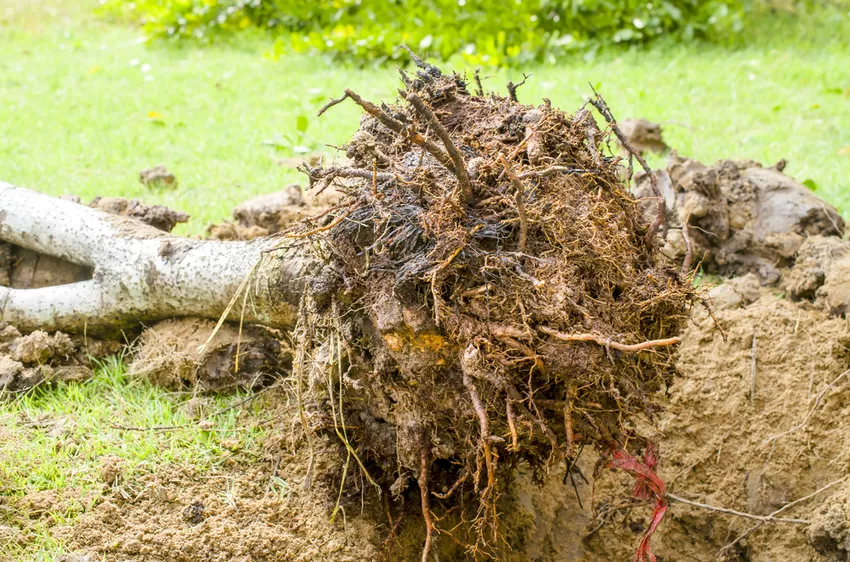Up until now, boxwood has been considered an uncomplicated, pruning-friendly and very versatile garden tree. Unfortunately, pests such as the box tree moth or diseases such as dieback have been destroying large stocks for several years - often so quickly that gardeners can hardly keep up with countermeasures. Sometimes the only alternative is to remove the affected socket.
 Digging up an older box tree is a real challenge
Digging up an older box tree is a real challenge
Save or dig up an infested box tree?
Box tree moths and other pests eat infested trees and bushes bare within a very short time. There seem to be hardly any countermeasures, or in many cases they only take effect for a very short time. It becomes difficult, especially when it comes to saving bed borders and other boxwood hedges: Collecting the caterpillars with so many densely planted plants is almost impossible, so that the pressure of infestation can hardly be contained. Not every gardener wants to constantly handle toxic chemical agents in the garden - perfectly understandable. The only alternative is often the permanent removal of the Buxus.
plant alternatives
To contain the damage from the outset, you should use hardy boxwood species and varieties such as 'Herrenhausen', 'Arborescens', 'Faulkner' and 'Elegantissima'. These are also attacked, but much less frequently than more sensitive Buxus such as 'Blauer Heinz', 'Suffruticosa', 'Handworthiana', 'Raket' and Rotundifolia'. If you want to be on the safe side, choose replacement plants from other, similar species, such as
- Japanese holly (Ilex crenata)
- Glossy honeysuckle (Lonicera nitida)
- Privet (such as Ligustrum vulgare 'Lodense')
- Barberry (such as Berberis buxifolia 'Nana' or 'Kobold')
- Tree of life (e.g. Thuja occidentalis 'Teddy')
How to remove unwanted book
Buchs is a very pruning-tolerant plant that keeps growing. At the same time, the flat root is difficult to remove because its roots grow very widely. Of course, it's best if you dig up the plants completely, including their roots. However, if you do not want to or cannot do this work, these measures are also effective:
- Cut the boxwood down to just above the ground in midsummer.
- Be sure to dispose of infected clippings in airtight packaging with the household waste.
- Never compost it or dispose of it in the organic waste bin.
- Cover the cuts with weed foil or peat soil or fertilizer.
- Buchs only likes high pH values and will sprout less here.
- Cut off or pull out any shoots again and again.
- After a year, the box problem should have been resolved.
tips
In locations where a fungal disease or a pest such as the box tree moth has already occurred, no new boxwood plants should be planted for at least four years.